We have seen in my previous blog how we can access the application externally using Service object. We have two options to get traffic outside the cluster
- NodePort
- LoadBalancer
Mostly the load balancer option is preferred in the public cloud providers.
Checkout my Youtube video for this article
Limitations:
- The problem is that one LoadBalancer can only point towards a single Kubernetes service object.
So now if you have 100 microservices -> you need 100 load balancers -> very expensive
2. Let’s suppose that you have a web service running at test.com and you want test.com/users to go to one microservice and test.com/notifications to go to another completely separate microservice. Before the arrival of Ingress, you would need to set up your own Kubernetes Service and do the internal path resolution to your app.
The above issue is resolved using Kubernetes Ingress resource.
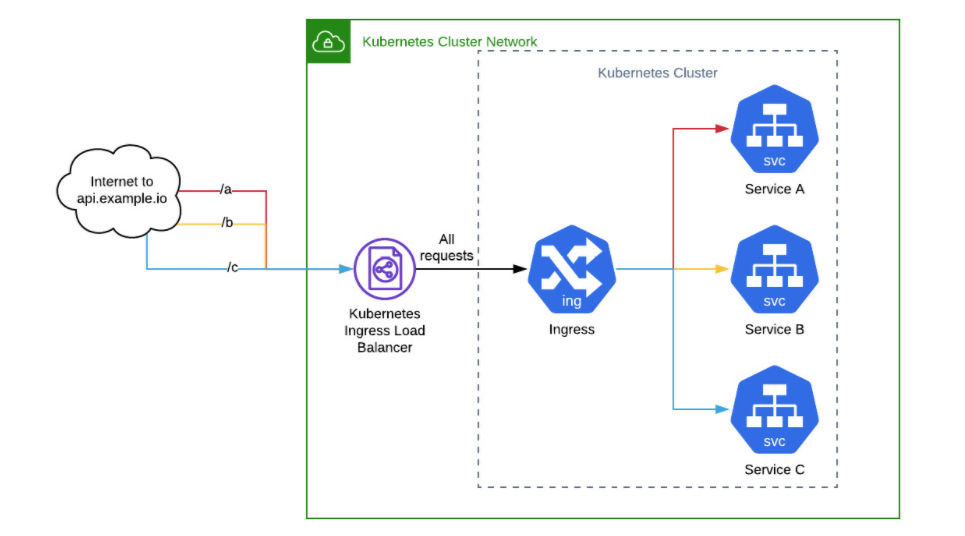
What is Ingress ?
An API object that manages external access to the services in a cluster, typically HTTP.
It also provides
- load balancing
- SSL termination
- name-based virtual hosting
Simple example where ingress sending all traffic to one service
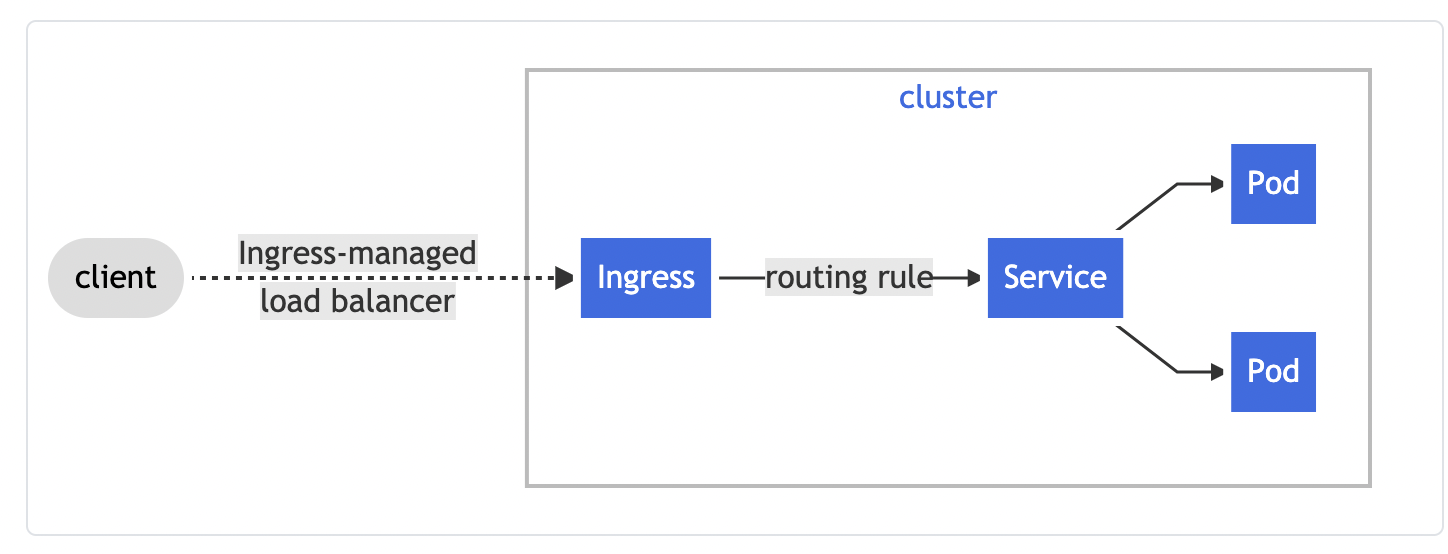
Ingress Controller is responsible for fulfilling the ingress
What is Ingress Controller
In order for the Ingress resource to work, the cluster must have an ingress controller running. There are lot of ingress controllers available, you can find those details from their official documentation.
Here, we will be using nginx ingress controller and do the deployment on GKE as per their document
Prerequisite:
- Functional Kubernetes Cluster configured
- Clone this git repo
Create an ingress controller
On GKE, we will run the below command which will create an ingress controller on our cluster
kubectl apply -f https://raw.githubusercontent.com/kubernetes/ingress-nginx/controller-v0.43.0/deploy/static/provider/cloud/deploy.yaml
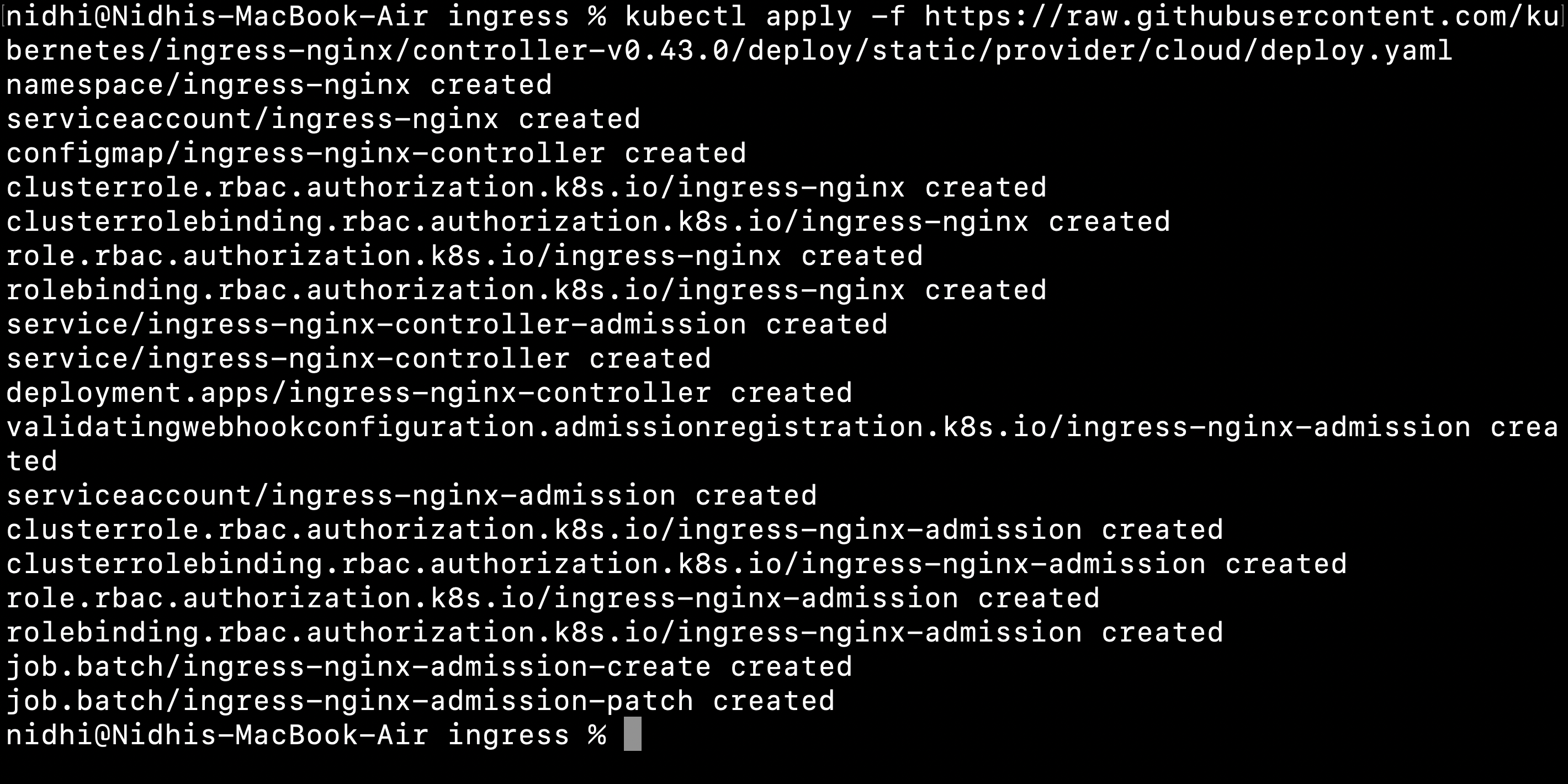
kubectl get pods -n ingress-nginx

kubectl get svc -n ingress-nginx
We can see two services are running for the nginx-controller

Basic Example of using Kubernetes Ingress Resource
Now we will run a sample application configured in this yaml file and expose it externally using Kubernetes Ingress Resource
apiVersion: apps/v1
kind: Deployment
metadata:
name: web
namespace: default
spec:
selector:
matchLabels:
run: web
template:
metadata:
labels:
run: web
spec:
containers:
- image: gcr.io/google-samples/hello-app:1.0
imagePullPolicy: IfNotPresent
name: web
ports:
- containerPort: 8080
protocol: TCP
---
apiVersion: v1
kind: Service
metadata:
name: web
namespace: default
spec:
ports:
- port: 8080
protocol: TCP
targetPort: 8080
selector:
run: web
type: NodePort
Run the below command
cd ingress/basic-example
kubectl apply -f web.yaml

Now we will deploy an ingress resource
apiVersion: networking.k8s.io/v1beta1
kind: Ingress
metadata:
name: basic-ingress
spec:
backend:
serviceName: web
servicePort: 8080
Run the below command
kubectl apply -f basic-ingress.yaml

kubectl get ingress

Run the command again if IP didn’t come
Note: It might take a few minutes for GKE to allocate an external IP address and set up forwarding rules before the load balancer is ready to serve your application. You might get errors such as HTTP 404 or HTTP 500 until the load balancer configuration is propagated across the globe.
You will see in your google account that one load balancer is getting created

Now you can open this IP on the browser
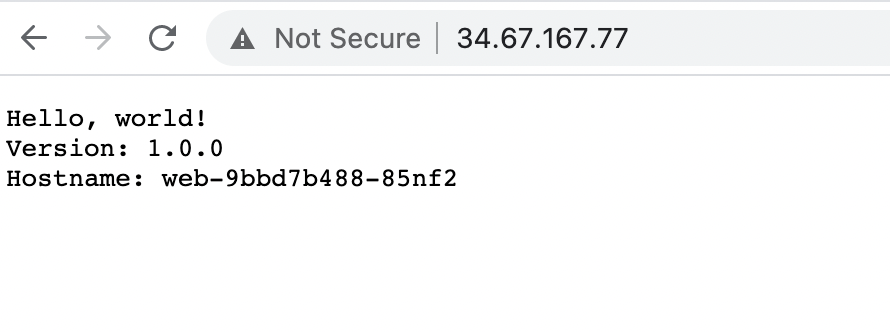
In this example, no host is specified, so the rule applies to all inbound HTTP traffic through the IP address specified. If a host is provided (for example, test.com), the rules apply to that host.
Simple Fanout
A fanout configuration routes traffic from a single IP address to more than one Service, based on the HTTP URI being requested.
This yaml file will deploy 2 deployments( web and web1) and 2 services ( web and web1)
apiVersion: apps/v1
kind: Deployment
metadata:
name: web
namespace: default
spec:
selector:
matchLabels:
run: web
template:
metadata:
labels:
run: web
spec:
containers:
- image: gcr.io/google-samples/hello-app:1.0
imagePullPolicy: IfNotPresent
name: web
ports:
- containerPort: 8080
protocol: TCP
---
apiVersion: apps/v1
kind: Deployment
metadata:
name: web2
namespace: default
spec:
selector:
matchLabels:
run: web2
template:
metadata:
labels:
run: web2
spec:
containers:
- image: gcr.io/google-samples/hello-app:2.0
imagePullPolicy: IfNotPresent
name: web2
ports:
- containerPort: 8080
protocol: TCP
---
apiVersion: v1
kind: Service
metadata:
name: web
namespace: default
spec:
ports:
- port: 8080
protocol: TCP
targetPort: 8080
selector:
run: web
type: NodePort---
apiVersion: v1
kind: Service
metadata:
name: web2
namespace: default
spec:
ports:
- port: 8080
protocol: TCP
targetPort: 8080
selector:
run: web2
type: NodePort
Run the below command
cd ingress/fanout-example
kubectl apply -f web.yaml
Now we will create an fanout ingress configuration
apiVersion: networking.k8s.io/v1beta1
kind: Ingress
metadata:
name: fanout-ingress
spec:
rules:
- http:
paths:
- path: /v1/*
backend:
serviceName: web
servicePort: 8080
- path: /v2/*
backend:
serviceName: web2
servicePort: 8080
Run the command
kubectl apply -f fanout-ingress.yaml
Name-Based hosting
For name based hosting will be providing the hostname configuration in our yaml file
apiVersion: networking.k8s.io/v1beta1
kind: Ingress
metadata:
name: host-ingress
spec:
rules:
- host: "test.com"
http:
paths:
- path: /test
backend:
serviceName: web
servicePort: 8080
- host: "abc.com"
http:
paths:
- path: /abc
backend:
serviceName: web2
servicePort: 8080
Run the below command
cd ingress/name-host
kubectl apply -f web.yaml
kubectl apply -f host-ingress.yaml
To access this url, edit /etc/hosts file on Mac
Add a line
IP of ingress test.com

Now try to access the browser as shown below:
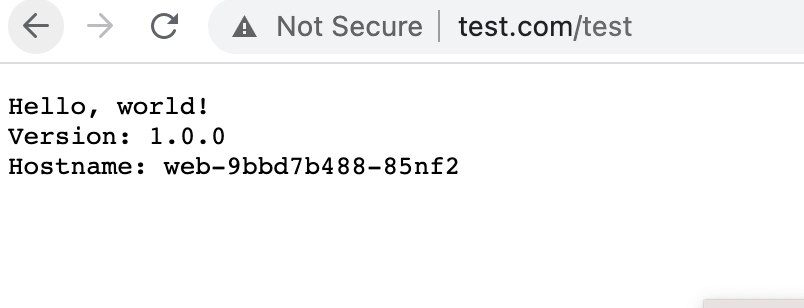

References